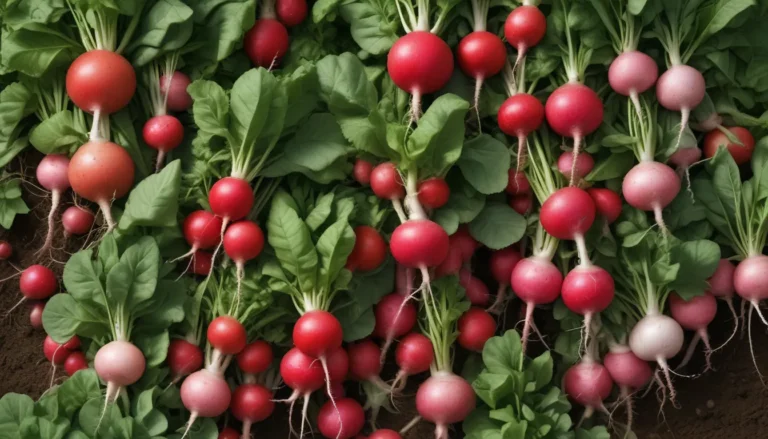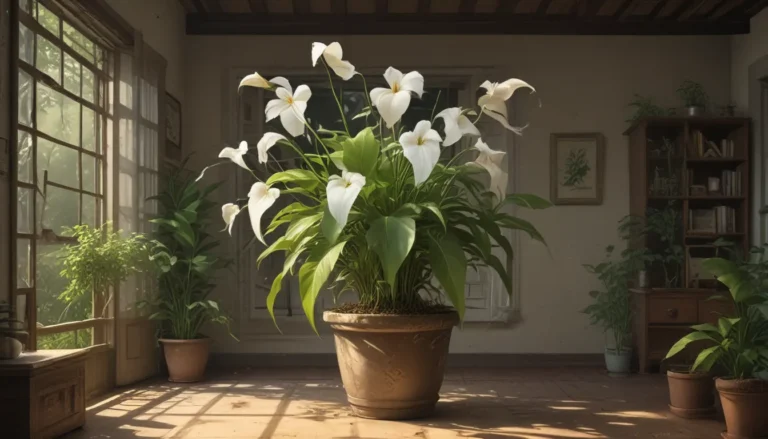The Ultimate Guide to Growing and Caring for Goldenrod Plants

If you’ve ever marveled at the sight of a field adorned with a vibrant carpet of golden flowers during the autumn season, chances are you were witnessing the beauty of goldenrod plants. These wildflowers, classified under the genus Solidago, boast stunning clusters of golden blooms that attract beneficial insects and pollinators like bees and butterflies.
While goldenrods are commonly found growing in the wild, they can also make a charming addition to your garden or landscape. In this comprehensive guide, we will uncover the secrets to successfully growing and caring for these North American native plants, allowing you to harness their natural beauty for your own benefit.
Let’s delve into the fascinating world of goldenrods and discover how you can cultivate these enchanting perennials in your own backyard.
Unveiling the World of Goldenrod
Goldenrod is the common name used for a myriad of wildflower species within the Solidago genus, encompassing approximately 100 to 120 different varieties. These plants produce large clusters of small, golden yellow flowers, with certain species also featuring white and bicolored blooms.
The inflorescences of goldenrods vary in shape, with some appearing as wand-like panicles while others form flat-topped corymbs. Leaves are typically lance-shaped or oblong, ranging from four to 12 inches in length. The texture and color of the foliage can vary, with some goldenrods boasting hairy leaves while others exhibit smooth surfaces.
In terms of growth habits, goldenrods can vary significantly, with certain species forming basal rosettes at ground level, while others showcase evenly distributed leaves along the flower stalks. Additionally, goldenrods range in height from a modest six inches to an impressive eight feet, depending on the specific species.
These plants propagate via rhizomes, with some species featuring extensive rhizomes that form expansive colonies, while others remain clump-forming and more restrained. It’s worth dispelling the myth that goldenrods are the cause of late summer allergies, as they bloom concurrently with ragweed, a common allergen.
Unveiling the Cultivation and History of Goldenrods
Native to a diverse array of habitats across North America, goldenrods can be found thriving in meadows, prairies, coastal regions, bogs, woodlands, and dry sand dunes. These plants are part of the sunflower family, Asteraceae, and share relations with common garden flowers like marigolds and zinnias.
In addition to being pollinator magnets, goldenrods have an extensive history of ethnobotanical uses, with various native tribes utilizing these plants for medicinal purposes. The name Solidago translates to “to make whole,” emphasizing the healing properties associated with goldenrods.
Propagation Techniques for Goldenrods
Goldenrods can be propagated via seed or division, with each method offering its own set of unique advantages. When growing from seed, it’s essential to provide cold, moist stratification to enhance germination rates. For division, opt to separate plant sections in late winter or early spring for best results.
Transplanting young starts is a pivotal step in the propagation process, requiring careful handling and proper spacing techniques. Be sure to choose a variety that aligns with your region and landscaping goals to ensure a successful propagation process.
Cultivating and Growing Goldenrods: Tips and Tricks
To cultivate goldenrods successfully, it’s crucial to understand the unique soil, light, and water requirements of each species. Select a native variety that complements your climate and landscape conditions, ensuring optimal growth and development.
Certain species of goldenrods prefer full sun and dry to medium soil, while others thrive in moist, shaded environments. By tailoring your growing environment to suit your chosen species, you can cultivate healthy, thriving goldenrods that will enhance your landscape.
Pruning, Maintenance, and Disease Control
Maintaining goldenrods is relatively straightforward, with minimal maintenance required throughout the year. Seasonal pruning and division tasks can help ensure the longevity and vibrancy of your goldenrod stand, while also mitigating potential pest and disease issues.
Prune back established specimens in the spring, divide spreading types every few years, and monitor for common pests and diseases such as rust, powdery mildew, and leaf spot. By implementing preventive measures like proper spacing and avoiding overwatering, you can safeguard your goldenrods against common ailments.
Best Uses and Cultivars Selection
With a wide array of species and cultivars to choose from, selecting the right goldenrod for your landscaping needs is essential. Whether you’re looking to create a vibrant meadow, pollinator garden, or cut flower display, there’s a goldenrod variety suited to your vision.
From the showy ‘Fireworks’ cultivar to the compact ‘Golden Baby’ and ground-covering ‘Golden Fleece,’ there are plenty of options to explore. Choose a cultivar that aligns with your space requirements and aesthetic preferences to make the most of these stunning plants in your garden.
Quick Reference Growing Guide
- Plant Type: Herbaceous flowering perennial
- Native to: North America, South America, Eurasia
- Hardiness (USDA Zone): 2-9, depending on species
- Maintenance: Low to moderate
- Bloom Time: Late summer, fall
- Exposure: Full sun to full shade, depending on the species
- Spacing: 1-4 feet, depending on species or cultivar
- Height: 6-96 inches
- Spread: 24-36 inches
- Water Needs: Low to high, depending on species
- Attributes: Attracts bees, butterflies, other pollinators
Embrace the Golden Glow of Goldenrods
Harness the natural beauty of goldenrod plants to transform your garden into a haven of golden hues and buzzing pollinators. By understanding the unique characteristics of these wildflowers and selecting the right species or cultivars, you can create a landscape that dazzles with late-season blooms and vibrant colors.
Whether you opt for the striking ‘Fireworks’ cultivar or the compact ‘Golden Baby,’ there’s a goldenrod variety suited to your gardening aspirations. Embrace the golden glow of these magnificent plants and infuse your outdoor space with the Midas touch of nature’s beauty.





